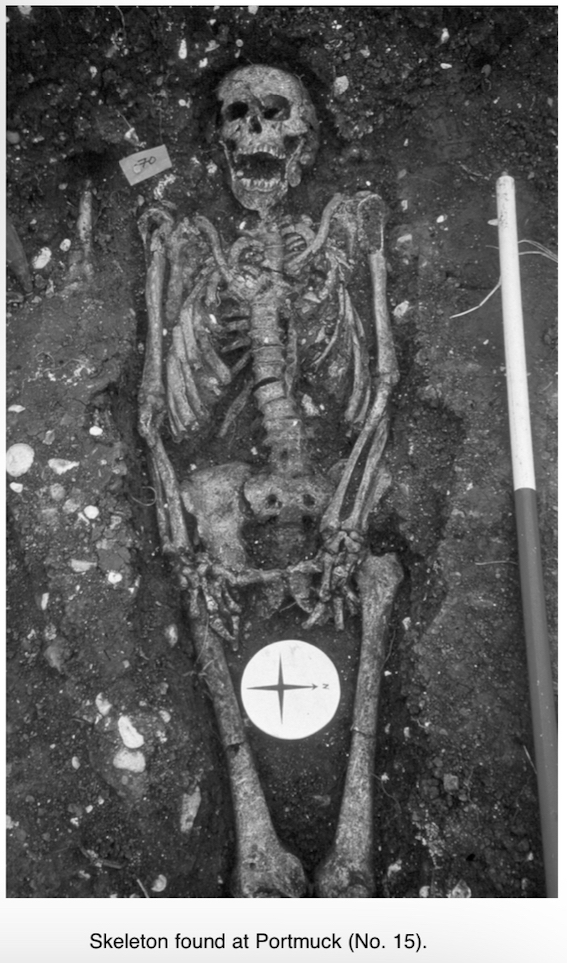County: Antrim Site name: PORTMUCK
Sites and Monuments Record No.: SMR 41:4 Licence number: AE/01/15
Author: Declan P. Hurl, Environment and Heritage Service
Site type: Graveyard and Ecclesiastical enclosure
Period/Dating: Medieval (AD 400-AD 1600)
ITM: E 745950m, N 902209m
Latitude, Longitude (decimal degrees): 54.846439, -5.727376
The landscaping of the bank of a stream adjacent to the reputed site of a medieval abbey in an area known as the Kirk Field revealed a number of burials. When informed, EHS arranged to investigate and, if possible, totally excavate the cemetery.
The excavation was made difficult by the slope of the bank, and particularly by the reinstatement of the removed material over the site, which had been considerably disturbed. The earliest burials tended to consist of long cists composed of substantial chalk slabs both lining and capping the graves and with pounded pebble bases. This method of grave construction continued to be used for later burials, though sometimes more rudimentary in execution, whilst in other instances a line of smaller slabs would be placed over a body, or a simple earth-cut grave was backfilled with chalk and flint pebbles. Occasional paired burials were also uncovered. In post-medieval times the top of the slope appears to have been used as a killeen, to judge from the simple shallow burials, mainly of children. In all, 65 burials and 15 disarticulated collections of bones were recovered. Analysis has been hampered by the poor and/or fragmentary condition of the bone.
Artefactual evidence was slight and usually residual. Apart from early flint tools and debitage, to be expected in an area of chalk cliffs, there were several sherds of coarse and glazed medieval pottery and a bone peg, the latter removed from a reused long cist. A small bone die, 7mm along each side and with the numbers depicted by dot-and-circle decoration, was found over the culverted stream.
A subsequent geophysical survey of the abbey site revealed numerous features suggestive of enclosure walls, paths and buildings.

5–33 Hill Street, Belfast